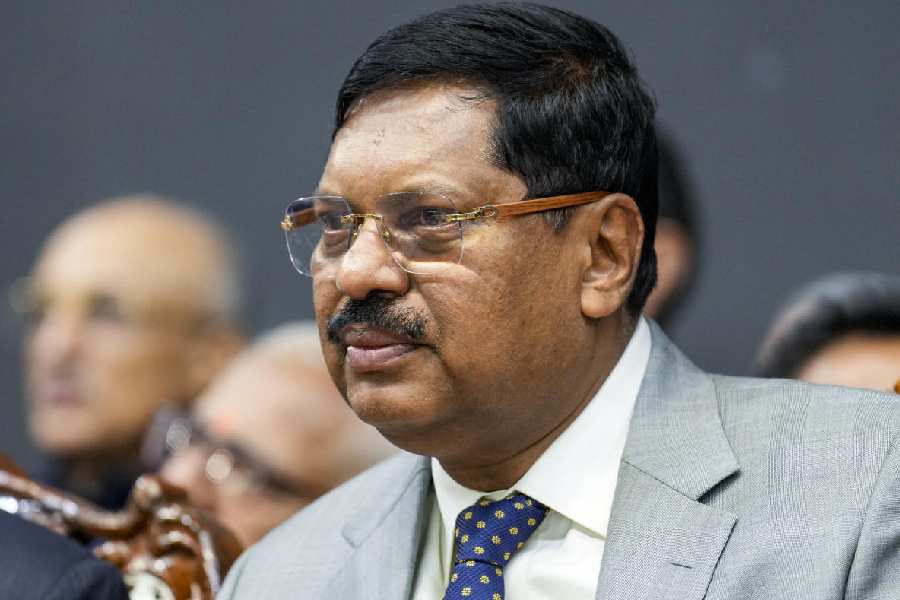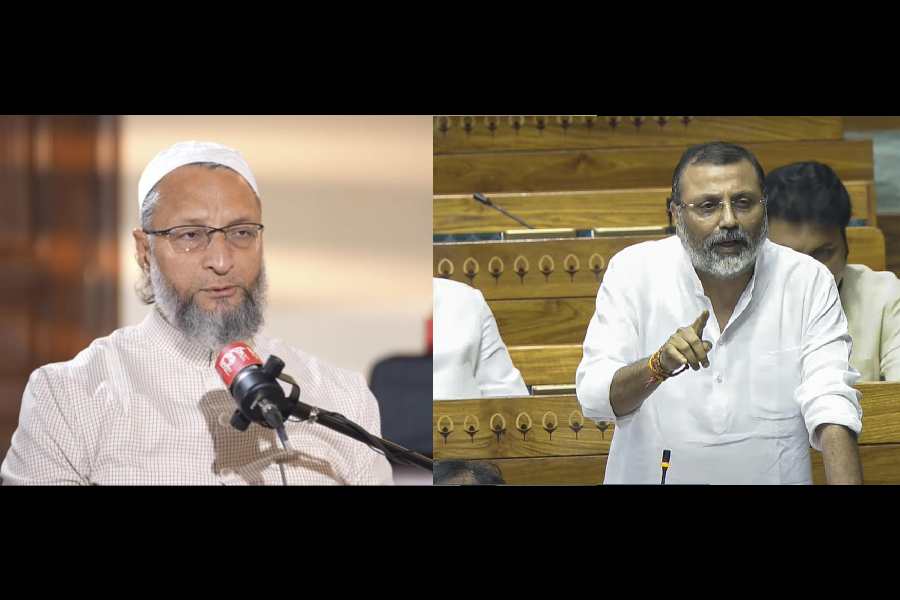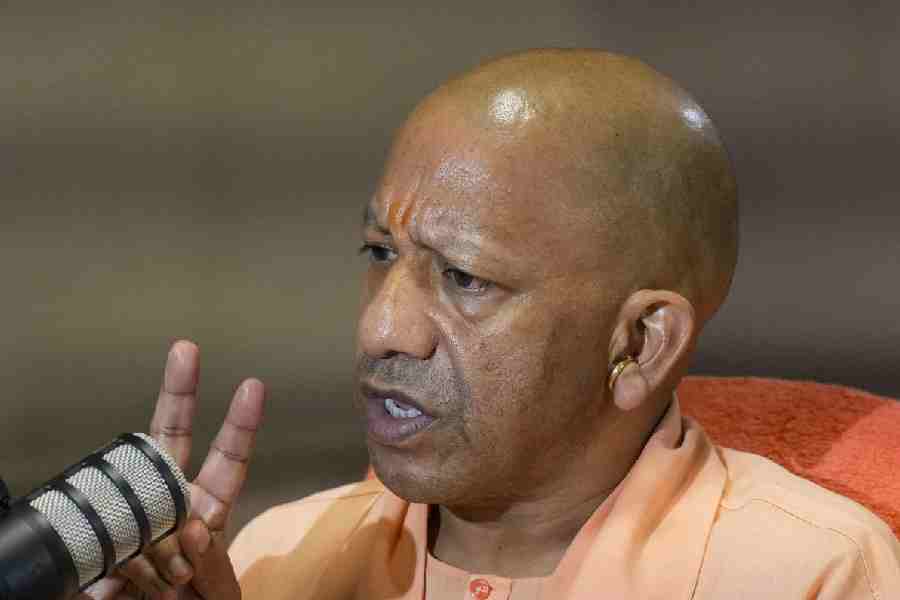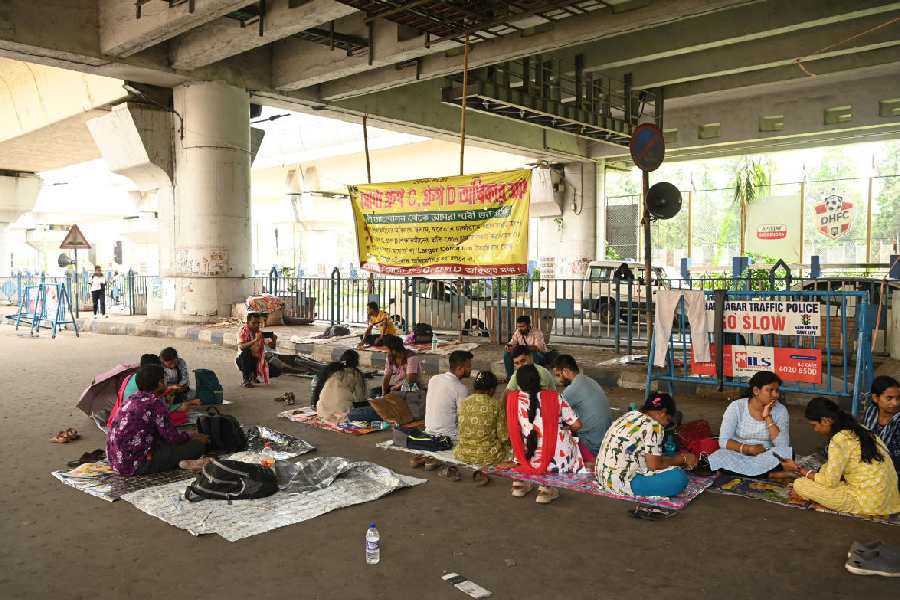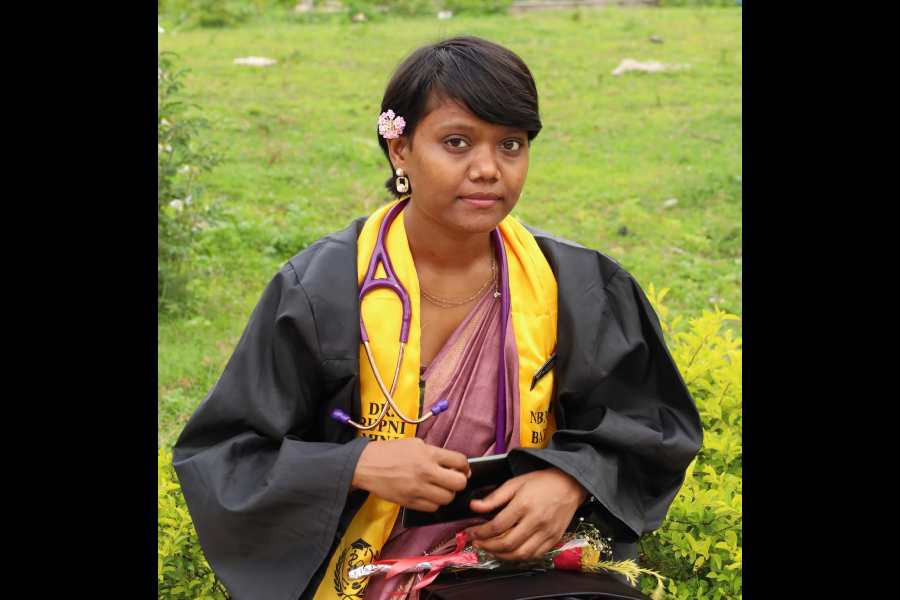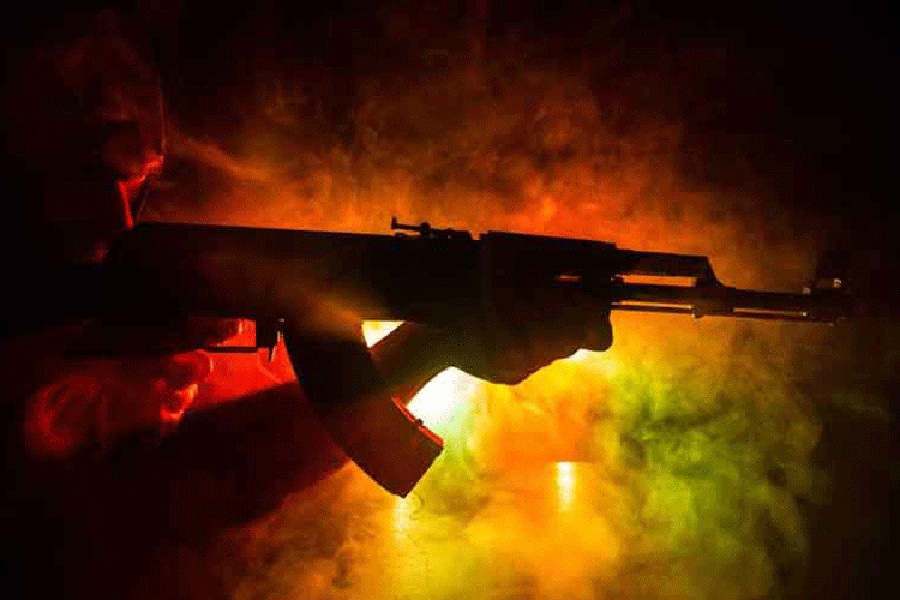 |
| Eroticism and myth: A painting by Kartick Pyne |
A common theme does not necessarily relate two different artists aesthetically. This is evident in the current exposition of oils, acrylics and water colours by Kartick Pyne and Prokash Karmakar on the subject ?Nudes?, at Chitrakoot Art Gallery. The former?s vision of things is fluid, and almost devoid of linearity, while the latter?s main thrust is on stylised drawing of the late 20th-century French genre. Moreover, Karmakar?s style betrays a kind of mechanical repetitiousness. Despite some interesting experiments on possibilities of physical distortion, they verge on bare-bodied acrobatics, bereft of erotic innuendos. The absence of rasa in Karmakar?s neatly constructed nudes may not have become all-too-glaring if his oeuvre was exhibited either as a solo show or together with works of kindred artists.
Kartick Pyne almost never misses out on the ultimate content on the nude, namely human emotion and intelligence. My objective is not to say that Karmakar?s nudes are not endowed with other pictorial qualities. What his thrust on rigid constructional compositions lack is the power to move the spectator to empathy. He also makes it obvious that acrobatically inspired or plainly twisted female nude forms more often than not fail to generate a significant experience of the erotic kind which men rightly desire to have. Karmakar, on his part, has tried to convey erotic experience through the wrong kinds of drawing, while Pyne succeeds in doing it naturally. Both have avoided slipping into the pitfall in which Samuel Alexander once landed himself when he said: ?If the nude is so treated that it raises in the spectator ideas or desires appropriate to the material object, it is false art, and bad morals.? This high-minded theory is contrary to experience, and it is necessary to labour the obvious and say that no nude, however, abstract, should fail to evoke some vestige of erotic feeling. If it does not do so, it is bad art and false morals. Both Karmakar and Pyne do look uninhibited and amoral in the light of the above observation. But Pyne successfully mixes (at least in his best compositions) eroticism and myth.
Jyotirmoy Roy Chowdhury?s technical training in his formative years combines two distinctive styles of contemporary Indian sculpture. He studied under Madhab Bhattacharya, an early pupil of Prodosh Dasgupta, before learning the tricks of metal casting under Tarak Garai, a well-known disciple of Ramkinkar Baij. He thus participated in the Birla Academy exhibition, held as a retrospective show of Prodosh Dasgupta, a few years ago. Among today?s important sculptors, Sarbari Roy Chowdhury has a similar, Pradosh-Ramkinkar mixed background.
Jyotirmoy?s recently-ended exhibition at the Academy of Fine Arts comprised sculptural creations made of different materials, including terracotta and bronze. His two works on the same subject, the Buddha, brings into relief the original genius of terracotta and bronze in terms of their textural difference. The decorative flourish of a kathak dancer in action stood in animated juxtaposition with Player (a percussionist), demonstrating the rich versatility of the bronze medium. Mentor Tarak Garai?s creative flavour is best seen in the last-mentioned composition incorporating the essential tribal body language.


